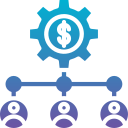Begin with Clarity: Your Goals, Your Numbers
Pick one focus—build a $1,500 emergency fund, pay off a high-interest card, or save three months’ rent. One goal concentrates your starter kit around tools you will actually use daily.
Begin with Clarity: Your Goals, Your Numbers
List income dates, fixed bills, and habitual spends like coffee and rideshares. Seeing timing gaps helps you choose tools with fee-free buffers, smart alerts, and automation that smooths your month.





